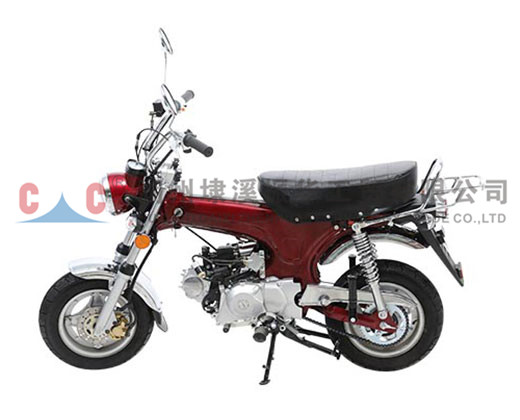The profound attraction of classic motorcycles transcends mere nostalgia, rooting itself deeply in an appreciation for mechanical artistry and a tangible connection to motoring history. These "old-school" machines, often characterized by their exposed mechanisms and robust, straightforward engineering, offer a riding experience dramatically distinct from their modern counterparts. Where contemporary bikes prioritize seamless performance and electronic intervention, the classic motorcycle demands a more engaged, almost symbiotic relationship with its operator. The rhythmic pulse of a vintage engine, the distinctive aroma of aged oil and fuel, and the necessity of mastering subtle starting rituals—these elements combine to forge a deep, personal bond. For the enthusiast, every scratch and patina tells a story, every maintenance task becomes a meditation, and the ownership of such a vehicle serves as a deliberate rejection of disposable consumerism, celebrating instead the beauty of lasting, repairable craft. This enduring appeal is precisely why so many are drawn to the intricate and rewarding path of maintaining and riding these historical icons.
Embarking on a classic motorcycle restoration does not inherently require an unlimited financial outlay; prudence and strategic thinking are the true currencies of a successful, budget-friendly project. The initial step is to judiciously assess the vehicle's true condition, distinguishing between cosmetic flaws and critical mechanical failures. Focusing on functional integrity first—engine, brakes, and electrical systems—will prevent costly detours later. When sourcing replacement components, explore specialized enthusiast forums and community swap meets before committing to new stock; this often uncovers both affordable pre-owned parts and invaluable advice. For surface rehabilitation, resist the urge to immediately commission professional paintwork. Simple, meticulous techniques like wet-sanding and compound polishing can breathe new life into faded enamel, while methodical application of rust converters and protective coatings can dramatically improve the appearance of chrome and bare metal without exorbitant plating expenses. Patience, coupled with a commitment to do-it-yourself labor, transforms the process into an immensely rewarding exercise in resourcefulness.
The carburetor is unequivocally the very heart of any classic combustion engine, a delicate mechanism responsible for perfectly metering the air and fuel mixture, and its precise functionality is paramount to smooth running. Given that these units predate modern electronic fuel injection, they are particularly susceptible to the degrading effects of modern fuels and the accumulation of varnish and debris from prolonged storage. A comprehensive carburetor cleaning is more than a simple wipe-down; it is a meticulous, multi-step procedure that must be undertaken with great care. After careful removal from the manifold and fuel line, the unit must be fully disassembled, documenting the position of all jets, needles, and springs, ideally through photography. Every tiny passage and orifice within the body should be saturated with a specialized cleaning solution and cleared with compressed air, ensuring no trace of obstruction remains. Reassembly requires precision, and a final, careful adjustment of the idle mixture and synchronization is crucial to maximizing engine responsiveness and fuel efficiency.
The prospect of disassembling a classic motorcycle engine can appear daunting, yet with the right approach, a DIY rebuild is entirely within the realm of the capable beginner. The foundation of this project is preparation: establishing a clean, well-lit workspace and acquiring the fundamental tools, including a reliable set of wrenches, torque measuring devices, and specialized pulling tools where necessary. Before turning a single bolt, securing the original manufacturer’s workshop manual is absolutely non-negotiable, as it provides the essential specifications for clearances, tolerances, and the critical sequence of tightening bolts. As components are removed, a rigorous system of organization—using labeled bags, trays, or partitioned storage—is essential to track every fastener and gasket. The rebuild itself is an exercise in meticulous patience; every bearing, seal, and piston ring must be seated with care, and all fasteners torqued precisely to prevent later catastrophic failure. This journey is not about speed, but about an unwavering commitment to detail and the sheer satisfaction of bringing a complex piece of machinery back to life.
While many iconic European motorcycle roads are well-documented, the true joy of touring on a classic machine lies in the discovery of hidden, less-traveled arteries that offer both stunning scenery and a pace conducive to vintage travel. Beyond the well-known Alpine passes, for example, lie the quieter, winding roads of the Carpathian foothills or the remote coastal tracks weaving through the Scottish Highlands. These routes, often narrower and less manicured, are perfectly suited to the classic bike experience, promoting a more intimate engagement with the landscape. Successfully navigating these scenic detours requires a shift in mindset: prioritize enjoying the moment over reaching a distant destination quickly. Pre-trip preparation for a long tour is paramount; this includes a thorough mechanical inspection, packing a concise selection of essential tools and spares—such as bulbs, fuses, and cable repair kits—and, crucially, carrying physical maps as a backup to electronic navigation, acknowledging the limitations of technology in remote areas.
The longevity of a classic motorcycle depends not just on regular use, but on diligent long-term preservation practices, particularly during periods of storage. Before laying up a motorcycle, performing a fuel-system safeguard is vital; this often means draining the tank and carburetors entirely, or, alternatively, treating the fuel with a specialized stabilizer to prevent the formation of corrosive deposits. The battery should be disconnected and attached to a low-amperage maintenance device to prevent irreversible sulfation. Beyond mechanical care, a classic motorcycle thrives within a vibrant, supportive ecosystem. Engaging with local riding clubs or participating in online classic motorcycle enthusiast forums provides an unparalleled resource for troubleshooting difficult problems, sharing specialized knowledge, and sourcing obscure parts. The collective wisdom of the classic riding community is arguably the most valuable tool an owner can possess, transforming the solitary challenges of maintenance into a shared, enriching experience that preserves not just the machines, but the culture that surrounds them.
